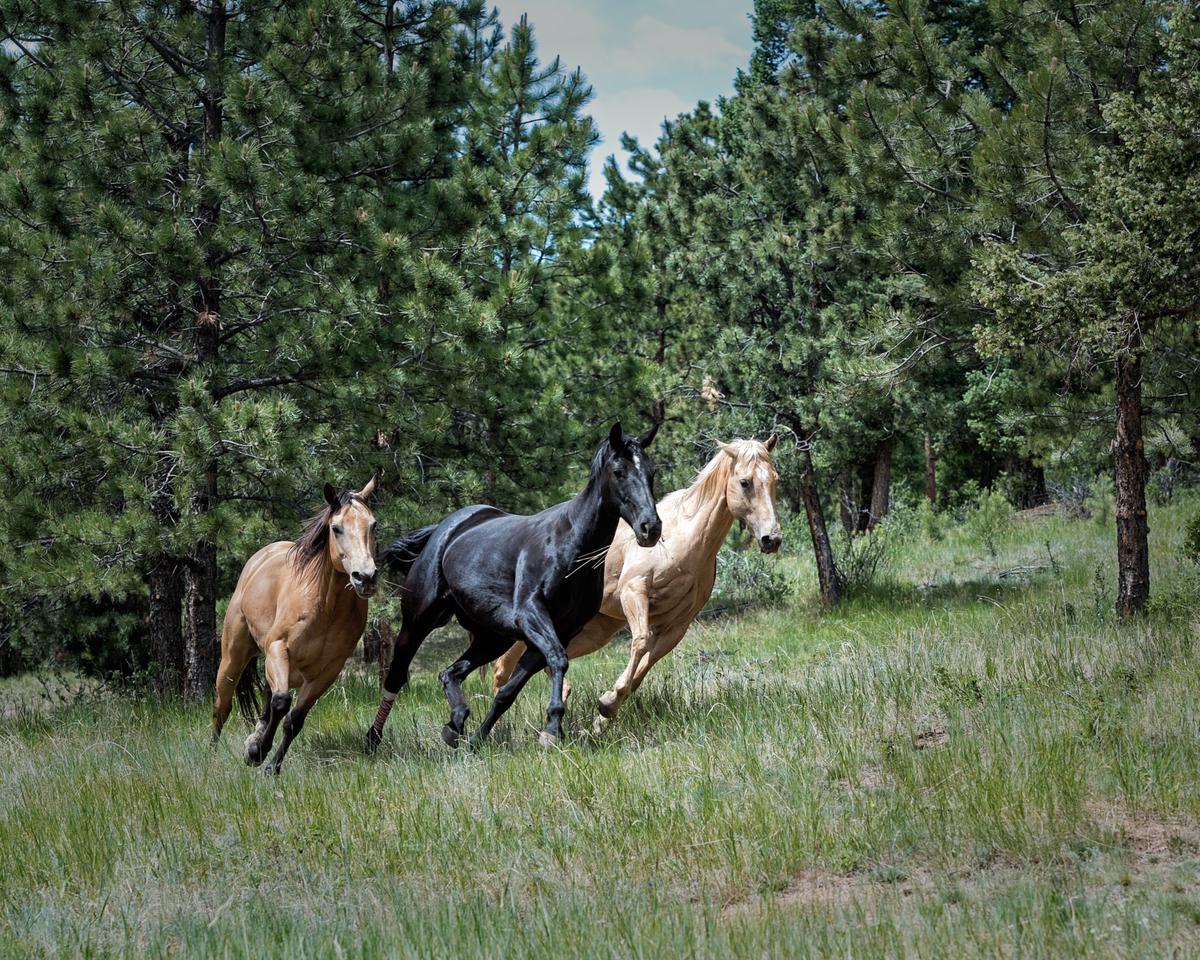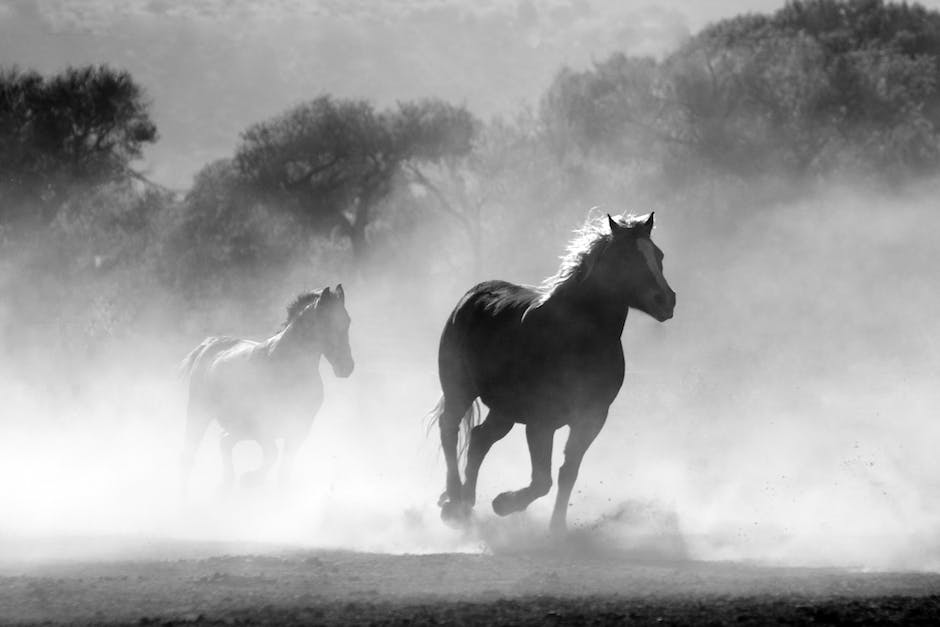Renowned for its strength, agility, and grace, the Warmblood horse breed has deep roots in Germany. Heavily intertwined with the nation’s equestrian history, these fascinating creatures trace their lineage back to the early 20th century. From the famous Hanoverian to the widely respected Oldenburg and Holstein breeds, Warmbloods, aptly named for their balanced temperament, are a vivid embodiment of centuries of superior horse breeding. German Warmbloods are not just horses, they are a majestic feat of selective breeding that combines the best traits of hot-blooded and cold-blooded breeds. This piece will take you on a journey through the history and evolution of these distinct horses, examine their unique physical traits and characteristics, and delve into their contemporary relevance in Germany’s cultural and economic landscapes.
Table of Contents (Horspedia)
Origins and History of German Warmblood Horses
Origins of German Warmblood Horses
The development of the German Warmblood horses started in the early 20th century, during a period of rapid industrialization and the transition from animal to machine power in agriculture and transport. Initially, these horses were bred with the aim of producing heavy working horses that could be used in both agriculture and warfare. However, as machines largely replaced horses in both fields, the breeding focus shifted from working horses to sport horses.
Different Breeds of German Warmbloods
There are several distinctive breeds of German warmblood horses, each bred for various purposes. The most popular breeds are the Hanoverian, the Holsteiner, the Oldenburg, and the Rhinelander.
The Hanoverian breed emerged in Lower Saxony, which was once the kingdom of Hanover. The Hanoverian is known for its versatility and athleticism, capable of excelling in a variety of equestrian disciplines, especially in dressage and jumping competitions.
The Holsteiner originated in Schleswig-Holstein, the northernmost state in Germany. The breed is ancient and dates back to the 13th century. Holsteiners are renowned for their jumping ability, and this breed has produced many Olympic and World Championship medal winners.
The Oldenburg breed, named after the Grand Duchy of Oldenburg in northwestern Germany, is recognized for its tall, elegant, and powerful build. Oldenburg horses have excelled in international dressage and jumping competitions, similar to the Hanoverian breed.
Lastly, the Rhinelander is a versatile breed that originated from the Rhineland region of Western Germany. Nowadays, this breed is best known for its abilities in dressage and show jumping.
Evolution of German Warmblood Horses
As the needs of German society transformed over the years, so too did the qualities sought after in warmblood horses. Today, they are primarily bred for sport and recreational riding. Outcrossing with lighter, faster breeds like Thoroughbreds, Arabians, and Trakehners influenced the breed over time, infusing speed, endurance, and refinement into the genetic pool.
Over time, the significant cross-breeding has created horses with favorable sport-type characteristics – they are large but not overly heavy, elegant and capable of performing complex movements gracefully.
Introduction to Contemporary German Warmbloods
In the world of equine sophistication, German warmbloods have morphed from a ‘type’ of horse into a distinct breed that is admired globally. Known for their awe-inspiring athleticism, trainability, and temperament, they are a preferred choice for Olympic sports such as dressage, eventing, and show jumping. Their substantial achievements in these sporting disciplines have cemented their reputation as one of the preeminent horse breeds worldwide.
Germany’s stringent breeding programs and rules deserve recognition for consistently maintaining the high quality of these horse breeds. Owing to their outstanding versatility and performance record, German warmblood horses continue to be esteemed by equestrians and breeders across the globe.

Photo by devine_images on Unsplash
Breeds and Characteristics of German Warmblood Horses
A Close Look at Hanoverians: The Star German Warmbloods
The Hanoverian breed commands a prominent place among German warmblood horses. Its origin dates back to the 16th century in the federal state of Lower Saxony. Initially bred for the cavalry, Hanoverians typically stand between 15.3 and 17.2 hands high, with a robust and proportioned body that features a sturdy back, potent loins, and wide, muscular hindquarters. They display a variety of solid colors, including chestnut, black, bay, and gray.
Hanoverians are generally composed, willing to work, and are celebrated for their adaptability. Their superior strength, agility, and stride make them a particularly good fit for multiple equine sports such as dressage, show jumping, eventing, and even driving competitions.
German Warmblood Horses: Oldenburg
The Oldenburg breed is another well-respected German warmblood horse, originally bred within the boundaries of the Oldenburg and East Frisia region. The physical characteristics of an Oldenburg typically include a large frame, standing from 16 to 17 hands high with a long, elegant neck, a straight profile, and a well-balanced conformation. They are often black, bay, chestnut, or grey, and their personalities are marked by their willingness to work, intelligence, and an inherent calm nature. Oldenburg horses excel in various equestrian sports but are especially popular in dressage, show-jumping, and eventing due to their powerful movements, stamina, and abilities in high jumping.
German Warmblood Horses: Holstein
The Holstein breed hails from the region of Schleswig-Holstein in northern Germany. They are considered one of the oldest of all German warmbloods, with breeding records dating back to the 13th century. Holsteins are usually between 16 and 17 hands high and distinctively have a more compact build than some other warmblood breeds. They possess a square-like frame with strong, long legs, making them uniquely suitable for jumping. They typically display a good temperament, are hardworking, alert, and are known for being calm under pressure, which makes them ideal for high-level show-jumping and dressage competitions.
In a nutshell, German warmblood horses, especially the Hanoverian, Oldenburg, and Holstein breeds, are much desired for their athletic capabilities, high performance in horsemanship sports, and commendable temperaments. These breeds, unique in their individual characteristics, are a symbol of horsemanship proficiency. Their inherent athletic prowess coupled with a disposition that is easy to train makes them a popular pick among a wide range of riders, be it amateurs or professionals.

Present State and Impact of Warmblood Horses in Germany
The Present Scenario of Warmblood Horses in Germany
Known for their size, strength, and adaptability, warmblood horses in Germany hold a high rank of importance. These horses are a unique mix of hotblood and coldblood horse attributes and are celebrated for their participation in a variety of horsemanship events, which includes dressage, jumping, eventing, and driving. Germany proudly showcases its warmblood horse breeds such as Hanoverians, Oldenburgs, Westfalen, and Holsteiners, to name a few.
As per the statistics shared by the German Equestrian Federation, as of 2021, there are approximately 1.3 million horses in Germany. Warmblood horses constitute a significant part of this population, making Germany one of the leading warmblood horse breeders in the world.
Economic Contribution of Warmblood Horses in Germany
The warmblood horse industry makes a considerable economic contribution to Germany. The horse industry is worth an estimated €5 billion in the direct sales of horses, equestrian including equipment, feed, and services each year. The breeding of high-quality warmbloods is a lucrative business, significantly contributing to this figure. These horses are sort after worldwide, securing Germany’s position in the international horse trade.
Germany is also known as the host for prominent, prestigious equestrian events, attracting thousands of tourists annually. These events present a great source of income, boosting local businesses and supporting job creation in the country.
Cultural Significance of Warmblood Horses in Germany
Warmblood horses carry deep cultural value in Germany, with a long history embedded in the society. Their importance dates back to the middle ages, where they were essential for transportation and farming. Today, they are a symbol of German tradition, excellence, and their commitment to maintaining high-quality standards in horse breeding.
The warmbloods are most cherished for their performances in equestrian events, where German-bred warmbloods frequently excel. These horses are often associated with German’s love and tradition for equestrianism, a practice that is now deeply rooted in the country’s culture.
Warmblood Horses in Equestrian Competitions
Germany’s love for warmblood horses isn’t just cultural, but also competitive. German Warmbloods continually perform admirably and top placements in international and Olympic equestrian events. They clearly dominate in dressage and show jumping events. Most recently, they displayed phenomenal performances in the 2020 Tokyo Olympics, with warmblood horses like Showtime FRH and Bella Rose 2 winning gold medals in Dressage.
In conclusion
Warmblood horses significantly impact Germany’s economy, culture, and equestrianism scene, attesting to their high value in the country.

The legacy of Warmblood horses in Germany—and indeed, the world—cannot be overstated. Their deep-rooted history, distinctive breed characteristics, and continual significance in modern German culture and economy are testaments to their enduring importance. The imprint they leave behind is indelible, influencing equestrian sports, rural economies, and even cultural narratives. As we observe the state of these incredible creatures today, it’s evident that their relevance never waned, still playing pivotal roles in equestrian events and boasting profound economic and cultural significance. As each Warmblood strides with grace and strength, it symbolizes Germany’s rich equestrian history, while carrying forward its legacy into the future.

